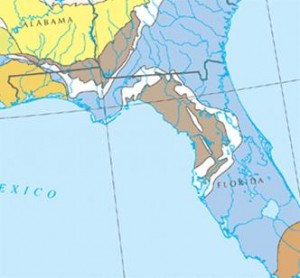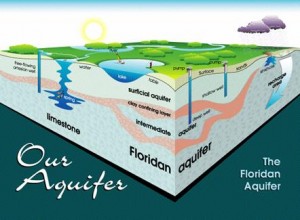Aquifer
An aquifer is an underground storage area for water that is surrounded by permeable rock, sand, silt, or clay. Rainwater penetrates the soil and rock, and eventually collects in a large subterranean cavity. This process is called ‘recharge’, and is the mechanism by which our aquifer is refilled and our springs keep flowing. Depending upon their depth, aquifers sometimes interact with surface activities that occur on land. Thus, shallow aquifers are susceptible to pollution and groundwater withdrawal. Those aquifers lying deep below earth’s surface with limited connectivity to the surface are referred to as ‘confined’ aquifers.
Aquifers are bordered on the top by the water table, the area in the soil or bedrock where all of the spaces (or pores) are completely filled with water. The saturated area that lies below the water table is referred to as the phreatic zone. Above that, water is found intermixed with pockets of air, and is referred to as the vadose zone. Caves, for the most part, form in the vadose zone; but submerged caves, like the ones we dive, are phreatic and are typically found below the water table.
The Floridan Aquifer is one of the most productive in the world. It underlies most of the southeastern United States, including parts of South Carolina, Alabama, Georgia, and Florida.
Images: http://water.usgs.gov/ogw/aquiferbasics/images/



